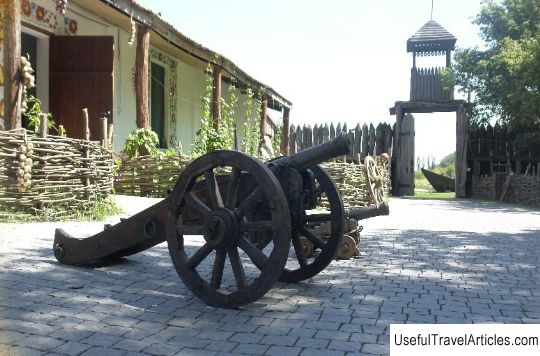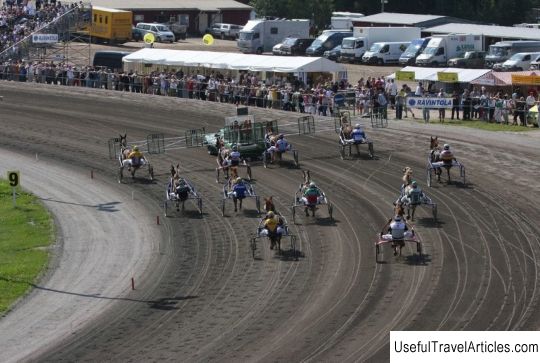Equestrian tourist equipment. Tips for beginners
Rating: 8,3/10 (4565 votes)  Horse trekking out of town – a unique way to combine pleasant outdoor activities with the opportunity to improve your physical fitness. Many people know that it is when riding a horse that many muscle groups are involved in a person, which puts equestrian sport on a par with swimming. But, the success of riding a horse depends not on the physical form of the rider. In many ways, it is the equipment of an equestrian tourist that affects how quickly he gets tired, how great is the risk of injury or other health problems. Let's try to figure out what an equestrian tourist needs to have during each trip.  Equestrian tourism ClothesJacketThe dress coat, a dressingot, which professional equestrians wear to ride on the racetrack, in conditions of a long trip. impractical. For this reason, for horseback riding tours, an ordinary jacket is often recommended, which is called – according to the weather. If the tour is planned in the summer, then a regular windbreaker, which is better to wear in the morning or in the late afternoon, will suffice. If we are talking about the off-season, then the jacket should be with normal insulation, so as not to catch a cold while in the saddle. The main condition is – so that the clothes do not hinder movement. The vestSpeaking of the vest for riding, you need to understand the approach to the issue. There are only two of them – traditionally tourist and professional. The first option implies an ordinary insulated vest. Standard options – bologna vest with padding polyester inside, the thickness of the insulation is selected according to the season. In such a vest, hands remain free, but you will need to take care of a long-sleeved shirt. The second option for professionals – this is a horseman's protective vest. Since most of the hoof strikes are on the human chest, it is the chest part of the vest that has the greatest reinforcement.  Regular insulated vest for equestrian tourism Safety is more important than equipmentAs experienced tourists who have dealt with equestrian routes assure, most of the injuries occur due to the fright of the horse. And even expensive equipment sometimes cannot protect a panicked animal from the hooves. The main safety rule of a horseman is – never approach the horse from behind. Before approaching an animal, you need to call him, warn him with a voice and give a nickname. Only then can the horse be approached from the front or, in extreme cases, from the side. While riding, you need to ensure that the legs remain strictly in the stirrups. Up to 60% of the reasons for falling from a horse are associated with a violation of this rule. In second place – incorrectly taken bridle, or even – released from the hands. Both violations can cause very serious injuries, up to falling under the hooves of an animal. And the last thing to remember during a group horse tour – it is keeping the distance. Experienced riders know very well that horses can conflict with each other no worse than humans, so the minimum distance between animals should be 5 meters.  Horse breeches BreechesDo you want to feel like a professional equestrian – take care so that your wardrobe must have horse breeches – those very tight tight trousers in which athletes go to the racetrack. Modern models are sewn from a special elastic fabric that can withstand not only stress, but also long friction. BeltThe main requirement for a horseman's belt – it should be as narrow as possible so that in a sitting position nothing will put pressure on the abdominal region. It is not at all necessary to buy special models – any narrow belt from a regular clothing store will do. Knee-highsKnee-highs are recommended for everyone, regardless of the level of equipment. Shin, according to elementary rules of hygiene and safety, it should not have direct contact with the harness or the animal itself. Plus, knee-highs – it is a great protection against ticks and other nasty wildlife.  Equestrian knee highs ShoesBootsThe main rule of any riding shoe – the presence of a flat and short heel, so the classic boots are almost ideal for this purpose. Quite an ideal option – shoes with Velcro or zippers, because the presence of laces increases the risk of getting tangled in the stirrups. Important: Some equestrian instructors advise to wear mountain boots for a long hike. Their sole structure is well suited for fixing the foot in the stirrup. However, it is worthwhile to measure the height of such a boot in advance so that the foot, in principle, freely enters the stirrup and does not get stuck in it. BootsAdvanced horsemen never wear boots – they prefer boots. In specialized stores, if you have the right amount of money, you can buy the very high boots of a horseman that meet all the requirements of riding. They always come complete with a zipper or other fastener without laces, the boot protects the rider's foot and the heel matches all stirrup types to the millimeter.  Boots with leggings LeggingsIf there is no desire or opportunity to buy boots, then you can get by with leggings. In equestrian terminology, these are not fingerless gloves at all, but removable tops that are worn over any shoe. They are made from genuine leather, or from elastic fabric. The difference between the two types is in visual appearance, and, of course, in price. EquipmentHelmetFor any horse trekking helmet – an irreplaceable thing, although very often ignored by many, even experienced riders. In addition to elementary protection in the event of a fall, models of equestrian helmets perform another important function - sun protection thanks to the recognizable visor. Modern models of equestrian helmets are made of extra strong plastic and trimmed with felt or velvet. The result is a very stylish, extremely lightweight, but durable headgear that can protect against a strong blow.  Equestrian helmet WhipExperienced equestrian instructors will not whip trust every beginner rider. It is possible to urge a horse and set it into a trot, not to mention a gallop, only with complete confidence in one's own strength. For this reason, for the first time, you can safely forget about the whip and buy it only for the sake of the second or third, or better – the fifth horse march. SpursThose very spurs that the knights of cowboys had, by the XXI century have undergone significant changes in design. They are still attached to boots or boots, but they no longer injure the sides of the horse so much, even with strong `` acceleration ''. The only caveat is – you only need to buy them if you have some riding experience, as in the case of a whip.  Modern spurs First aid kitThe main attribute of the first aid kit of a horse tourist – it is sunscreen. Regardless of the weather, most often such tours take place in the open air for much longer than in overnight places. First of all, you need to take care of your face, then – about your hands. You should also always have with you ointments for injuries and bruises such as Rescuer. This is a universal tool that is suitable for any tourist, but it is especially important for horsemen. In addition, it is a good idea to have painkillers with you. Vodka on a hike is not needed for drinkingOne of the sudden elements of a horse tourist's first-aid kit will be vodka. But on such trips she is not taken in order to `` keep warm '' from the inside, but for completely different purposes. The main purpose of vodka in a horse trip – this is rubbing feet. Feet can freeze, they can become numb or simply get tired from constant tension and being in stirrups. To get rid of it is simple - – just take a break and rub a small amount of alcohol into your feet, you will feel the effect in a matter of minutes.  In addition, vodka can become an excellent antiseptic for abrasions, from which no tourist is insured. Of course, alcohol or iodine in this situation will be much more effective, but it is not always taken on a hike, so you can treat a scratch with vodka. Taking vodka inside on a horse trek is possible only as a last resort, at the first sign colds. For more effectiveness, it is better to add a little red pepper to alcohol, which will enhance the warming properties. A first aid kit is a necessary attribute of any outdoor activity In addition, vodka can become an excellent antiseptic for abrasions, from which no tourist is insured. Of course, alcohol or iodine in this situation will be much more effective, but it is not always taken on a hike, so you can treat a scratch with vodka. Taking vodka inside on a horse trek is possible only as a last resort, at the first sign colds. For more effectiveness, add a little red pepper to alcohol, which will enhance the warming properties. but it is not always taken on a hike, so you can also treat a scratch with vodka. Taking vodka inside on a horse trip is possible only as a last resort, at the first sign of a cold. For more effectiveness, it is better to add a little red pepper to alcohol, which will enhance the warming properties. but it is not always taken on a hike, so you can treat a scratch with vodka. Taking vodka inside on a horse trip is possible only as a last resort, at the first sign of a cold. For more effectiveness, it is better to add a little red pepper to the alcohol, which will increase the warming properties. We also recommend reading Things to do in Frankfurt Topic: Equestrian tourist equipment. Tips for beginners. |




